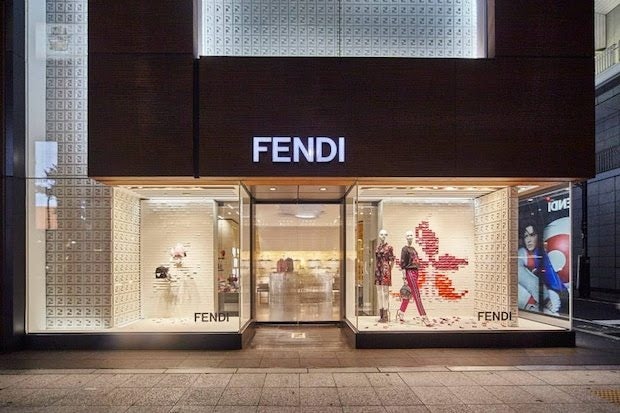
A Fendi store in Tokyo. (Courtesy Photo)
This article was published earlier in our weekly newsletter. Sign up through our “Newsletter Sign Up” box on the right.
Last week, LVMH and Kering revealed shining H1 financial results that point to continued success with outbound Chinese tourist-shoppers—but the real test will come in the second half of the year.
LVMH reported a 10 percent increase in Louis Vuitton sales to Chinese customers in the first half of 2015, improving on Q1 growth of 5 percent. This led to a year-on-year revenue increase of 19 percent globally to $18.5 billion. Kering also saw positive results, with 17 percent global revenue growth and a significant turnaround for Gucci, as sales increased 4.6 percent in the second quarter.
The results from both conglomerates follow a trend we saw with last week’s numbers for Hermès—Chinese travelers are taking advantage of lower prices and a favorable currency situation in Europe and Japan, while continuing to avoid shopping at home or in Hong Kong. Louis Vuitton growth was negative in mainland China, Hong Kong, and Macau, while Japan—arguably the hottest destination this spring and summer for outbound Chinese luxury shoppers—was the biggest contributor to LVMH’s sales growth, with a rate of 34 percent.
However, the question is now whether the companies can remain strong even if the currency situation changes. According to The Wall Street Journal, currency fluctuations have been a key driver of growth in the first half of 2015, but “under the veneer of growth lie lingering problems” including concerns about a continued Chinese slowdown and declining popularity of logo-heavy “cash cow” brands Louis Vuitton and Gucci.
That said, with regard to Chinese consumers LVMH and Kering both have plenty going for them for the next half of the year. For both conglomerates, smaller labels continued to maintain good momentum with Chinese shoppers—Fendi and Céline did well for LVMH, while Bottega Veneta and Saint Laurent saw strong growth for Kering.
In addition, the companies’ flagship brands are working to rejuvenate themselves in the eyes of consumers across the globe. Gucci reported better-than-expected results as it pursued a branding revamp under its new chief designer, while Louis Vuitton is hoping creative director Nicolas Ghesquière will continue to breathe new life into the brand after he was brought on two years ago.
In addition, and perhaps most importantly, both conglomerates are finally addressing some of the pricing issues that have caused the gray market to flourish in the China market (especially as the euro declined). Gucci enacted discounts of up to 50 percent earlier this year spurred by a falling euro, while LVMH said in its conference call this week it will adjust pricing with new products, although it will not be implementing price harmonization. The key challenge for these companies will be to nurture long-term brand loyalty and demand—both of which remain strong among Chinese shoppers, regardless of the currency situation at the moment.